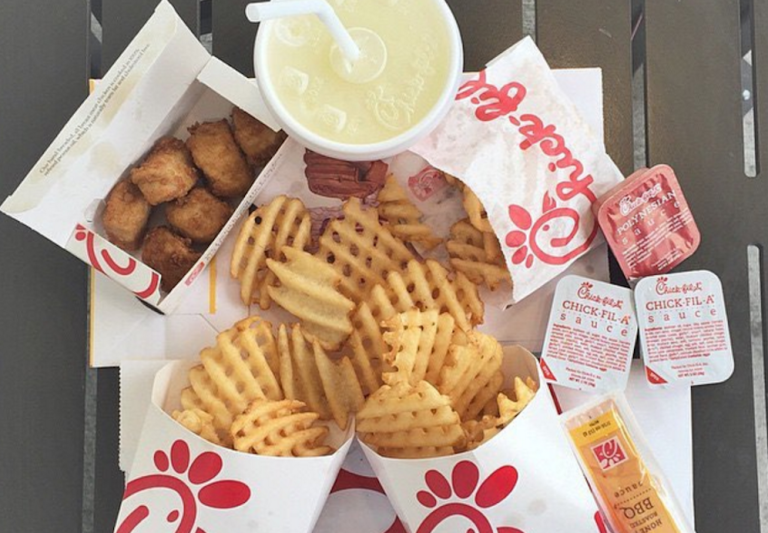
Is Chick-fil-A the nation’s most beloved fast food chain?
It’s a contentious question.
According to Foursquare, the answer is yes.
Unsurprisingly, fast food patrons immediately began warring on social media about whether or not the results could be trusted. People on social media will engage in online debate for almost any reason — sometimes no reason at all. But this time, data scientists wanted in on the argument.
Factual, which bills itself as a neutral data company, jumped into the debate, too, strong disagreeing with any result that didn’t crown McDonald’s as America’s most beloved quick-service restaurant (QSR) and noting that Foursquare’s methodology for determining the No. 1 spot was counterintuitive.
“It seems obvious, but the ‘most popular’ restaurant chain is the one that the most people have visited,” Factual wrote in response.
Foursquare did not factor in patron visits alone. If it had, McDonald’s would have been the clear winner in every state — and nationwide — by a pretty wide margin.
Instead, it looked at which fast food establishment received the most visits on average per location in every state based on the total number of visits to each chain divided by the number of locations in that state, which netted some interesting results. For example, by that math, California’s favorite fast food chain is Raising Cane’s, despite the fact that it only has 10 locations in California and isn’t exactly a household name.
“There are only two Chick-fil-A’s in Oregon. By comparison, there are more than 150 McDonald’s. From the place counts alone, it’s highly unlikely that more people in Oregon go to Chick-fil-A than McDonald’s,” Factual argued.
Factual looked a bit more deeply into what the second favorite fast food chain in each state was and discovered that Chick-Fil-A deserved some applause for its regional dominance, garnering the title of No. 2 QSR in every state in the Southeast between Maryland and Alabama. Florida was the unique regional exception — by the numbers, the state is solidly Burger King country.
While Chick-fil-A’s status in the rankings of fast food chains is (perhaps) up for grabs, a fairly solid mathematical case can be made that, despite its small size (relative to competitors like McDonald’s or Burger King), it is one of the vertical’s more pronounced and unusual success stories.
The company generates more revenue per restaurant than any other fast food chain in the U.S. And that’s despite being closed one day a week.
Chick-fil-A’s average sales per restaurant in 2016 were $4.4 million. Compare that to fried chicken competitor KFC, which sold $1.1 million per restaurant that year. The No. 2 slot — filled by Whataburger — only raked in $2.7 million in per-restaurant sales, followed by Panera.
The QSR also generated almost $8 billion in revenue in 2016, making it the eighth-largest fast food chain, with only 2,100 restaurants — none of which are open on Sundays and all of which close promptly at 10 p.m. McDonald’s has more than 14,100 locations in the U.S.; Taco Bell has nearly 6,300 and KFC has more than 4,160 — all of which are open seven days a week with many locations open late or 24 hours.
While those limitations, according to a company representative, are non-negotiable and unlikely to change now or in the foreseeable future, the brand does not see itself as one stuck in the past or afraid of embracing change.
In fact, Chick-fil-A recently completed a full update of its fast food mobile app, making it easier for customers to pay for their meals digitally. Though it has always been possible to pay via credit card, the version of the app launched a little over a year ago made it difficult to do so: The app pushed customers to load their “One card” and then pay.
“Customers were saying they didn’t like being forced to load funds onto the Chick-fil-A One card in order to buy something,” said Jay Ramirez, mobile product manager at Chick-fil-A, adding that people left negative reviews in the Apple and Android app stores as well as through the customer service number provided in the app.
Aware of the problem- but with really no data driven solution for it – Chick-fil-A teamed up with Taplytics to make payment options more clear through differentA/B testing solutions. By measuring the baseline of their payment flow, Chick-fil-A was able to find a successful variation that helped increase credit card payment use.
“Using Taplytics, Chick-Fil-A’s team was able to test different payment flows and find one that better highlights the credit card payment option. They were able to quickly iterate on ideas and implement changes using a data-driven approach, which ultimately resulted in an increase of credit card use through their mobileapp by six percent.” – Aaron Glazer, Co-Founder and CEO at Taplytics
So, the brand redesigned the payments section to make it easier to either “Pay with credit card” or “Pay with Chick-fil-A One.”
Sometimes a little change can make a notable difference to the bottom line.
“Not only did we see a lot more people recognize that a credit card option was available,” said Ramirez, but “overall conversions went up.”
That boost in conversions has also bumped up the restaurant’s rewards program (which gifts customers with free food for ordering digitally). Though Chick-fil-A hasn’t disclosed any official numbers, they have publicly stated that with rewards, customers tend to spend more and visit more often than their non-enrolled counterparts.